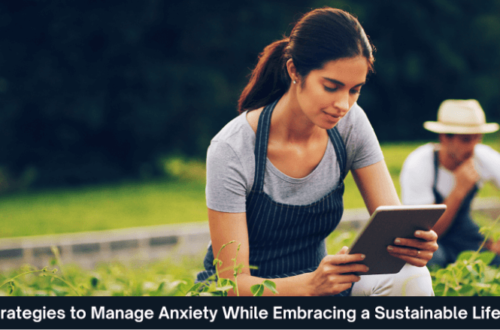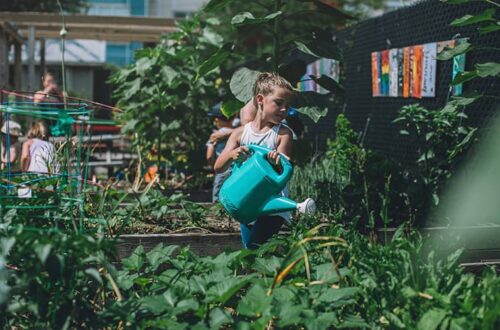Living sustainably doesn’t mean overhauling your life overnight or moving to an off-grid cabin (though, props if that’s your vibe). It’s about making small, intentional choices that add up to a big impact on the planet. I’ve always been passionate about reducing my environmental footprint, and after years of tweaking my habits—sometimes with a bit of trial and error—I’ve compiled 50 practical, actionable ways to live greener. Whether you’re a busy parent, a student, or just someone looking to make a difference, these tips are designed to fit into your life without feeling like a chore. Let’s dive in and explore how we can all do our part for Mother Earth, one step at a time.
Why Choose an Eco-Friendly Lifestyle?
Adopting a sustainable lifestyle isn’t just about saving the planet—it’s about saving money, improving your health, and feeling good about your choices. Small changes, like cutting down on single-use plastics or choosing local produce, can reduce your carbon footprint and inspire others to follow suit. In 2023, I started composting my kitchen scraps, and not only did my garden thrive, but I also felt a sense of pride knowing I was reducing landfill waste.
What Does Sustainable Living Mean?
Sustainable living is about using Earth’s resources wisely to ensure future generations can thrive. It involves reducing waste, conserving energy, and supporting ethical practices. Think of it as living lightly on the planet—like leaving a campsite better than you found it.
Benefits of Going Green
An eco-friendly lifestyle cuts your environmental impact, saves money, and promotes healthier living. For example, switching to LED bulbs can save you up to $75 a year on energy bills, while eating less meat reduces greenhouse gas emissions. It’s a win-win for your wallet and the world.
Home and Energy Conservation
Your home is a great place to start living sustainably. Small tweaks to your daily habits can make a big difference in energy use and waste.
Switch to LED Lighting
LED bulbs use up to 80% less energy than traditional bulbs and last longer. I swapped all my bulbs a few years ago, and my electricity bill dropped noticeably. Plus, they’re now affordable and widely available at stores like Walmart.
Unplug Devices When Not in Use
Phantom energy from plugged-in devices can account for 10% of your home’s energy use. Unplugging chargers and appliances when not in use is a simple fix. I keep a power strip for my electronics to make this easier.
Use a Programmable Thermostat
A smart thermostat can cut energy use by adjusting temperatures when you’re not home. Models like the Nest Thermostat are user-friendly and can save up to 15% on heating and cooling costs.
Wash Clothes in Cold Water
Washing clothes in cold water saves energy and is gentler on fabrics. I made this switch after learning that 90% of a washing machine’s energy goes to heating water. My clothes are just as clean, and my bills are lower.
Install Low-Flow Showerheads
Low-flow showerheads reduce water use without sacrificing pressure. I installed one from Home Depot and barely noticed a difference in my shower, but my water bill dropped by 20%.
Comparison: Traditional vs. Eco-Friendly Home Practices
| Practice | Traditional | Eco-Friendly | Benefit |
|---|---|---|---|
| Lighting | Incandescent bulbs | LED bulbs | Saves energy and money |
| Laundry | Hot water washing | Cold water washing | Reduces energy use |
| Shower | Standard showerhead | Low-flow showerhead | Conserves water |
| Thermostat | Manual thermostat | Programmable thermostat | Optimizes energy use |
Sustainable Food Choices
What you eat has a huge impact on the environment. From reducing meat to shopping local, these tips make sustainable eating easy and delicious.
Eat Less Meat
Meat production accounts for 60% of agriculture’s greenhouse gas emissions. Cutting back even one day a week, like Meatless Monday, can make a difference. I started with vegetarian tacos, and now my family loves them.
Buy Local and Seasonal Produce
Local produce reduces the carbon footprint of transportation. Visit farmers’ markets or join a CSA program like those listed on LocalHarvest. The food is fresher, and you’re supporting your community.
Compost Food Scraps
Composting diverts food waste from landfills and enriches your soil. I started with a simple backyard bin, and now my vegetable garden is thriving. Check out EPA’s composting guide for tips.
Avoid Single-Use Plastics
Swap plastic produce bags for reusable mesh bags. I got mine from Amazon and use them for everything from apples to kale. They’re durable and easy to wash.
Grow Your Own Herbs
Growing herbs like basil or mint is simple, even in small spaces. I keep a few pots on my windowsill, saving money and reducing packaging waste. Plus, fresh herbs make every meal better.
Eco-Friendly Transportation
How you get around can significantly impact your carbon footprint. These tips make greener travel accessible and practical.
Walk or Bike Short Distances
Walking or biking instead of driving cuts emissions and boosts your health. I started biking to my local coffee shop, and it’s now my favorite part of the day. Apps like Strava can track your rides.
Use Public Transportation
Buses and trains are far more efficient than cars. Check your city’s transit options on sites like Transit. I take the bus to work twice a week, saving gas and stress.
Carpool When Possible
Carpooling reduces emissions and splits gas costs. I organize a carpool with coworkers, and we take turns driving. Apps like Waze Carpool make it easy to connect.
Consider an Electric Vehicle
Electric vehicles (EVs) produce zero tailpipe emissions. While they’re an investment, models like the Tesla Model 3 are more affordable than ever. Test drive one to see if it fits your lifestyle.
Reducing Waste
Waste reduction is a cornerstone of sustainable living. These tips help you minimize what ends up in landfills.
Use Reusable Water Bottles
Single-use plastic bottles contribute to 335 million tons of plastic waste annually. I carry a stainless steel bottle from Hydro Flask, and it keeps my water cold all day.
Bring Your Own Shopping Bags
Reusable bags cut down on plastic waste. I keep a few in my car so I’m never caught without them. Many stores, like Target, sell sturdy options.
Recycle Properly
Proper recycling reduces landfill waste. Check your local guidelines on RecycleNation to ensure you’re sorting correctly. I learned my city doesn’t accept greasy pizza boxes—oops!
Repair Instead of Replace
Fixing clothes or electronics extends their life. I mended a favorite sweater instead of buying a new one, and it felt like a small victory. Find repair tutorials on iFixit.
Pros and Cons of Waste Reduction
Pros:
- Reduces landfill waste
- Saves money by reusing items
- Encourages mindful consumption
Cons:
- Requires learning proper recycling rules
- Repairs can take time
- Initial cost for reusable items
Sustainable Fashion and Shopping
Fast fashion is a major environmental culprit, but these tips make sustainable style achievable.
Shop Secondhand
Thrift stores and platforms like ThredUp offer affordable, unique clothing. I scored a vintage jacket for $15, and it’s now my favorite piece.
Choose Sustainable Brands
Brands like Patagonia prioritize eco-friendly materials and ethical labor. Investing in quality pieces means less frequent replacements.
Follow the “30 Wears Rule”
Before buying, ask if you’ll wear it 30 times. This tip from Livia Firth changed how I shop, cutting impulse buys and saving money.
Repair and Upcycle Clothes
Sewing a button or patching jeans extends clothing life. I turned an old t-shirt into a reusable tote, and it’s now my go-to for groceries.
Personal Care and Cleaning
Eco-friendly personal care and cleaning products are better for you and the planet.
Use Eco-Friendly Cleaning Products
Brands like Seventh Generation offer non-toxic cleaners. I switched to their dish soap, and my kitchen still sparkles without the chemical smell.
Try Shampoo Bars
Shampoo bars reduce plastic waste and last longer than bottled shampoo. I got mine from Lush, and one bar lasts me months.
Opt for Reusable Period Products
Reusable period cups or cloth pads save money and waste. I was hesitant at first, but my Diva Cup has been a game-changer.
Community and Advocacy
Sustainability isn’t just personal—it’s collective. Get involved to amplify your impact.
Support Local Environmental Groups
Join groups like Friends of the Earth to advocate for green policies. I attended a local clean-up, and the community vibe was inspiring.
Share Your Journey
Talk about your eco-friendly habits on social media or with friends. I posted about my composting setup on X, and three friends started their own bins!
Vote for Green Policies
Support candidates with strong environmental platforms. Your vote can influence policies on emissions and conservation. Check Vote Smart for candidate info.
People Also Ask (PAA)
What is an eco-friendly lifestyle?
An eco-friendly lifestyle involves making choices that reduce environmental harm, like conserving energy, reducing waste, and supporting sustainable products. It’s about living in harmony with the planet.
How can I start living sustainably on a budget?
Start with low-cost changes like using reusable bags, buying secondhand, or growing herbs. Many sustainable practices, like composting, require minimal investment but yield big results.
What are the best eco-friendly products?
Look for products with certifications like USDA Organic or Fair Trade. Brands like Seventh Generation, Patagonia, and Hydro Flask offer reliable, sustainable options.
Where can I find sustainable brands?
Check online marketplaces like Grove Collaborative or Thrive Market for eco-friendly products. Local thrift stores and farmers’ markets are also great.
FAQ Section
Q: How does sustainable living save money?
A: Sustainable practices like using LED bulbs, washing in cold water, or buying secondhand reduce utility bills and purchasing costs. Over time, these savings add up significantly.
Q: What’s the easiest way to start living sustainably?
A: Start small—swap single-use plastics for reusable alternatives like water bottles or bags. These changes are affordable, easy, and have an immediate impact.
Q: Are electric vehicles worth the investment?
A: EVs can save money on fuel and maintenance over time, especially with tax incentives. Research models like the Nissan Leaf or Tesla Model 3 to find one that fits your budget.
Q: How can I reduce food waste at home?
A: Plan meals, compost scraps, and store food properly to extend its life. Apps like Too Good To Go can help you use surplus food.
Q: Why is fast fashion bad for the environment?
A: Fast fashion produces 10% of global carbon emissions and uses massive amounts of water. Choosing secondhand or sustainable brands reduces this impact.
Final Thoughts
Living an eco-friendly, sustainable lifestyle is about progress, not perfection. Each small change—like using a reusable water bottle or supporting a local farmer—creates ripples that benefit the planet and your community. I’ve found joy in these habits, from the satisfaction of a thriving herb garden to the thrill of a thrift store find. Start with one or two tips from this list, and watch how they transform your life and the world around you. What’s the first eco-friendly habit you’ll try? Let’s make sustainability a part of our everyday story.





